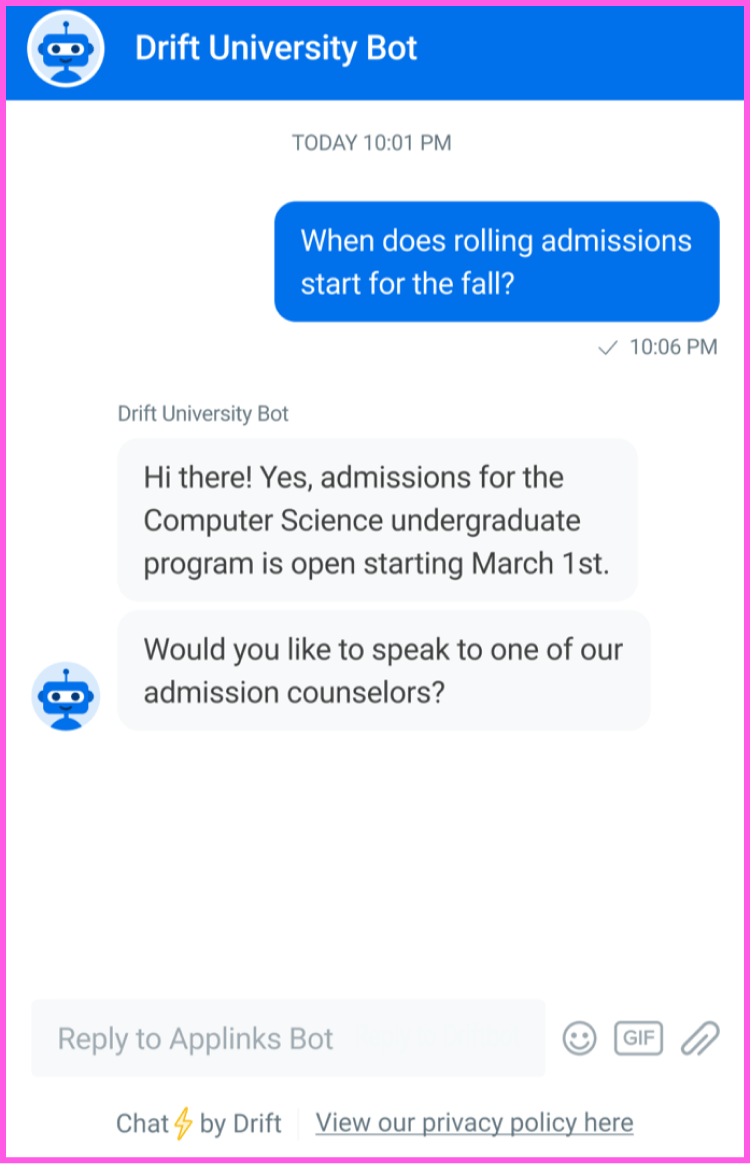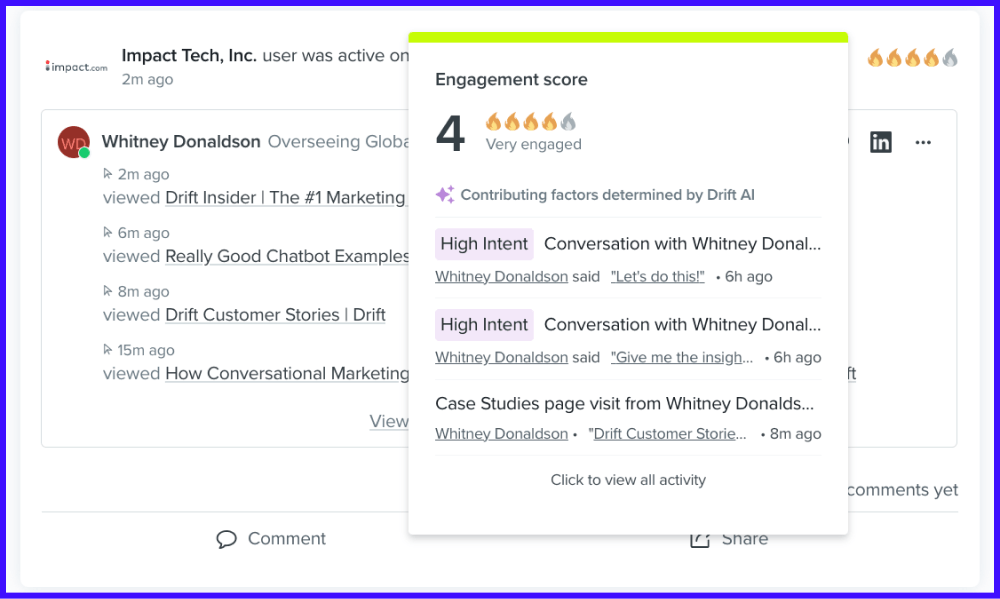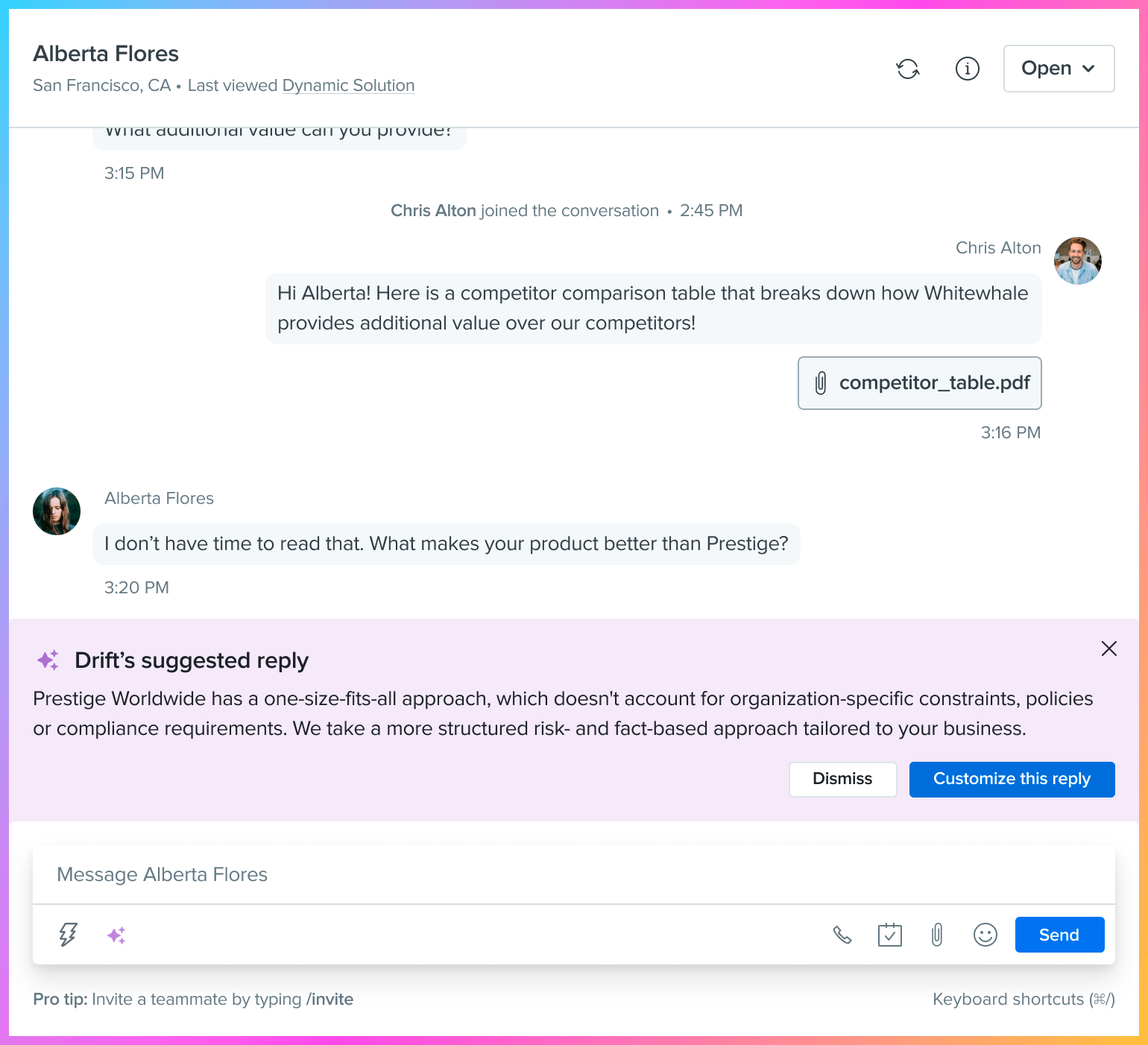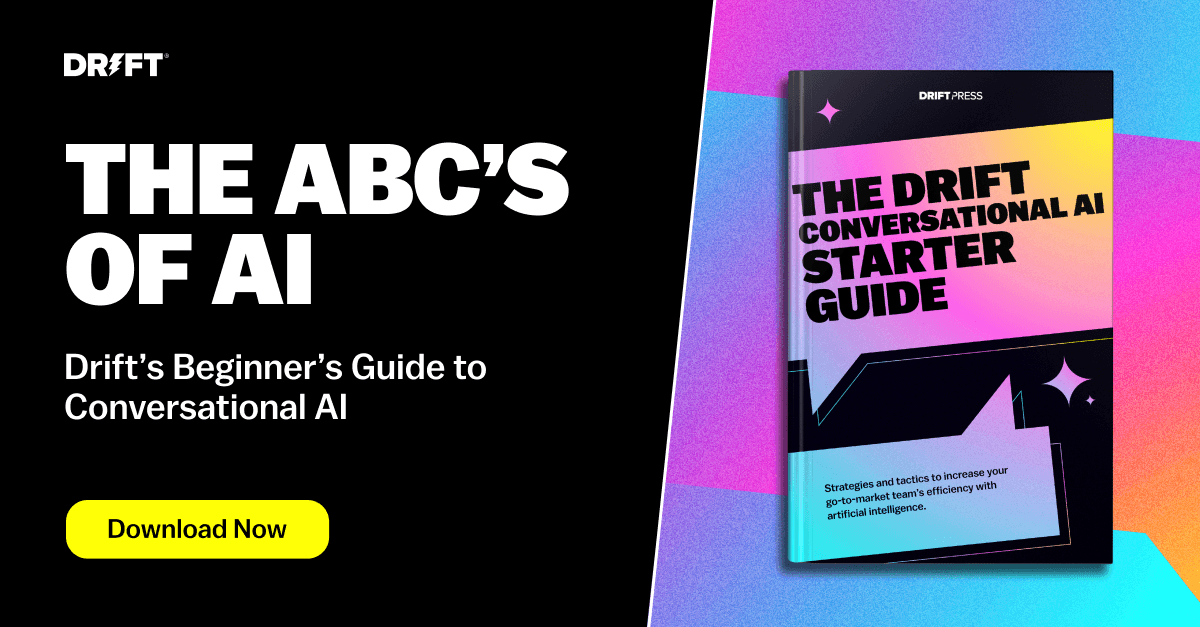These days, it feels like artificial intelligence (AI) is all anyone can talk about. But, it’s hard not to ask: “Is AI overhyped?”
The short answer: Definitely not.
According to McKinsey, by 2030, AI is expected to create $13 trillion in value for businesses globally. And recent innovations like ChatGPT already signal the potential that AI has to boost efficiency.
But, despite all these exciting developments, AI adoption in sales is lagging. According to Salesforce, only 33% of sales organizations today say they are using some form of AI (and many others aren’t quite sure what it means to use AI in sales at all).
So, what should sales teams do to catch up and make the most of AI? To answer this, I spoke on a webinar hosted by Revenue.io, joined by their Chief Strategy & Revenue Officer, Alastair Woolcock. Here’s what you need to know 👇
If you want to watch the full webinar recording, click here. Otherwise, keep reading for all the insights 💡
How Should Sales Teams Be Leveraging AI?
Ever since ChatGPT landed on the market, public interest in AI technologies has skyrocketed — and, as a result, new innovations have been emerging at a rapid pace. (Drift is no exception, as we continue to augment our AI to help teams drive results more efficiently.)
Now, sales teams have to figure out how both existing and emerging AI solutions best fit into their website experience, analytics, and processes. So, what should sales teams do to keep pace in this fast-changing environment?
The most important thing to remember is that AI is not a magical, one-size-fits-all solution. It’s a tool that empowers you to solve a pain point. As Alastair puts it:
“Artificial intelligence isn’t a technology. Artificial intelligence is an approach. It is a method. It is an intelligence to solve a series of distinct problems.”
Blindly implementing an AI solution — just for the sake of having AI — won’t yield results. That’s why it’s better to start by identifying a challenge that you are facing. Pick a specific conversion point or a moment of friction in the buying journey, and then consider which form of AI could help you solve that problem.
Ultimately, the goal of any sales technology is to help drive the highest quantity of the highest quality sales activities. By incorporating AI solutions that address your team’s pain points, you can maximize your efficiency so you can focus on what sellers do best — selling.
3 Real-Life AI Use Cases for Sales Teams
Although we’ve established that the way you use AI will depend on your business needs, with the number of AI solutions growing by the day, you may need a place to start.
Here are three AI use cases for your sales team to consider 👇
1. Deflect Noise from Your Sales Reps
Between people that are unqualified and those that aren’t ready to buy, most of the visitors who land on your website aren’t looking for a sales conversation. AI chatbots automatically deflect irrelevant traffic from your team so they can focus on the accounts that want to chat with them — while still ensuring that everyone receives an authentic experience.

Unlike rule-based chatbots, AI chatbots allow site visitors to ask questions in their own words, instantly providing an accurate answer in response. And the best part is that AI chatbots can continue the conversation from there — whether it’s to qualify the visitor, deliver personalized and relevant resources, or (if they’re ready) offer to connect them with sales.
2. Enhance Your Personalization Efforts
No two buyers are the same, even if they’re from the same account. So, what’s the best way to effectively tailor your interactions to each of your buyers?
On a broad level, you can leverage AI to analyze your conversational data and pinpoint what a good conversation looks like at each buying stage. For example, an AI can identify frequently asked questions in pricing conversations or common objections raised by a specific persona. Then, you can train your sales team or create resources to address those concerns upfront.
Conversational AI helps facilitate this kind of analysis by scaling humanlike interactions on your website and collecting that data to generate insights into your buyers. With this information, you can customize your outreach to fit individual needs and preferences.
To enhance your prospecting, Drift also offers an AI-powered engagement score which allows sales reps to pinpoint high-intent accounts based on all of their engagements with you — be it site visits, email activity, or meeting data — so you can easily prioritize your outreach.

Whether it’s from chatbots, live chat, or Zoom meetings, with this in-depth analysis of your conversational data, you can quickly get the information you need to deliver a personalized experience and, as a result, have better conversations with all your buyers.
3. Augment Your Sales Knowledge (in Real Time)
With the accessibility of information today, buyers are more informed than ever before — and this shift leaves sellers at a disadvantage. Generative AI solutions help balance the scales by augmenting your seller’s knowledge while they are engaging with your buyers.
For instance, Drift’s AI Suggested Replies in Live Chat make sure reps are equipped to answer important buyer questions by instantly generating accurate, on-brand responses. Crucially, our AI keeps humans in the loop, meaning reps have the power to customize the suggested reply or dismiss it if it doesn’t meet their needs. As a result, sales reps can always provide quick, reliable responses to buyers and customers, which drives more productive and effective conversations.

Final Thought
As sales teams search for new ways to make selling more efficient, we can expect AI solutions — and particularly generative AI — to become more and more prevalent.
But, with all the value that AI is capable of driving, it’s also important you stay aware of its risks. Without the proper guardrails in place, AI may produce outputs that are biased or even harmful, which means safe, compliant solutions that leave humans in the loop are going to matter.
Remember, at the end of the day, AI solutions are meant to make your interactions with buyers faster, better, and more efficient. So, as Alastair advises:
“Start from the point of engagement and work backwards. Don’t start with the sales process. … Otherwise, you’re going to get a lot of noise without the success.”
By focusing on eliminating friction points in your buying process and leveling up the interactions between buyers and sellers, you’ll have no problem creating value for your sales team and your overall business with AI.









